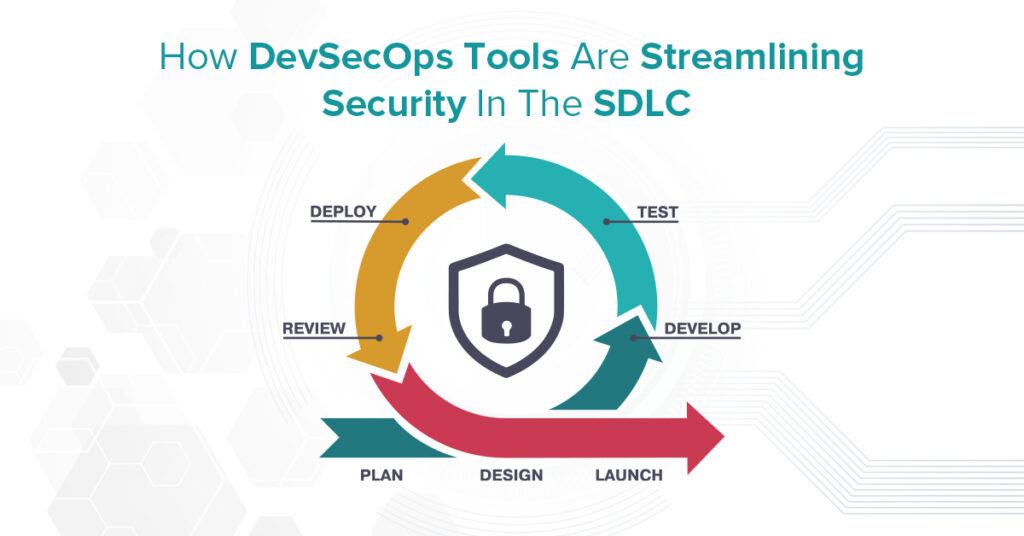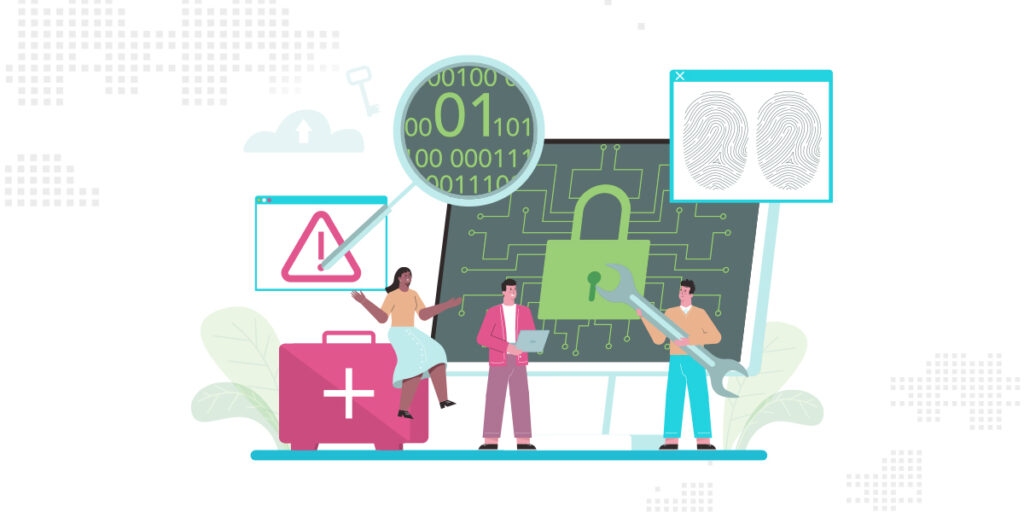How DevSecOps Tools Are Streamlining Security In The SDLC
Strengthen every stage of development with DevTools DevSecOps Tools — automate security checks, detect vulnerabilities early, and deploy confidently. Connect with DevTools experts to learn more!
14 +
Years of Experience
550 +
Happy Customers
250 +
Years of Tech Leadership Exp.

"License Reseller" and "Consulting & Implementation" Partner

TL;DR
- DevSecOps tools embed security across all stages of the software lifecycle, aligning with continuous integration, delivery, and the shift-left approach.
- They aim to reduce risk, automate security testing, and streamline compliance without slowing development velocity.
- Key categories include Software Composition Analysis (SCA), Static and Dynamic Application Security Testing (SAST/DAST), and automated testing frameworks.
- Popular tools like Jira, Acunetix, GitHub Actions, Aqua Platform, Jenkins, and Checkmarx help teams automate, monitor, and secure development pipelines efficiently.
In this era where the development cycles adjust to upcoming frontiers like Continuous Integration or Continuous Delivery and the new tide of shift-left development, developers are required to be fully aware of the tools they use more than ever before. DevSecOps tools are also a part of it, given the ever-changing nature of security vulnerabilities and compliance requirements.
What Are DevSecOps Tool?
DevSecOps is comprised of three words, which are development, security, and operations. It is a model used in software development processes that encourages an uninterrupted cycle of collaboration between the developers, security specialists, and operations teams throughout all the stages of a software development cycle. It encourages security in every phase of the software development cycle. The aim of this tool is to deliver secure and high-quality software.
DevSecOps tool is a great alternative to outdated software security tools that no longer keep up with tight timelines and quick software updates. One of the key elements of this tool is the introduction of a protected continuous integration or continuous deployment, which, with the help of streamlined processes and automation, delivers software rapidly.
Here comes a significant difference between DevOps and DevSecOps. While DevOps focuses primarily on faster delivery of high-quality software, DevSecOps also introduces security at every stage of the process.

What Are The Primary Goals of DevSecOps Tools?
Here are some of the most important goals that are fulfilled by DevSecOps tools-
- To cut down on risk without interrupting the speed of software delivery, This can be achieved by executing continuous security testing and fixing all the security threats beforehand.
- Assist the security teams with automating processes- Supports the teams in securing software development projects with automated processes and approving each release.
- Helps in shifting security left – The DevSecOps tools help in the automation of security tasks, which eventually helps in faster software delivery.
Types of DevSecOps Tools To Know About
It is always a great option to put various components together in a single system if building a whole new DevSecOps platform is something that your company cannot afford. In any case, it would be of help to be acknowledged of the key components that you will want to be there in your final solution.
Whether you have decided to build a DevSecOps system or put together individual pieces to a single system, here are some of the DevSecOps tools you should be aware of.
Software Composition Analysis
The role of Software Composition Analysis is to scan and analyse open-source applications to detect various problems ranging from quality issues and security threats to licensing problems. This tool ensures that all codes of the applications are up-to-date, maintained and in compliance with the regulations. Many of these SCA tools also help with remediation guidance according to the severity and type of problem.
Static Application Security Testing
Static Application security testing tools are somewhat similar to Software Composition Analysis tools when it comes to functions. The difference between the two is while the SCA tools are functional for only open-source applications, SAST also scans proprietary codes that are created internally. DevSecOps teams utilize a combination of both SCA and SAST tools to ensure security and high-quality delivery of software developed by making sure that every phase of the development cycle is scanned.
Dynamic Application Security Testing
Dynamic Application Security Testing tool is different from the other two discussed previously as the above two tools find their use in the building phase while this one is used for applications that are already running.
DSST tool is used to detect security threats in the already running application by deliberately introducing malicious input in it and analysing how the application responds to it. It identifies and resolves issues like SQL and OS injections, scripting errors, security header bugs, and insecure cookies.
Testing Automation
Manual testing of every application can be very hectic, can result in human errors sometimes and also requires great capital to hire a big QR team. This testing automation tool can help shift manual effort to engineered and automated units.
DevSecOps Tools List Streamlining Security During Development
- Jira Software: Over the years, companies have evolved from delivering 1-2 projects per year to delivering multiple projects every single day. Jira Software has made the sustenance of this practice easy for the teams. Jira Software is a project management tool that also supports agile methodologies like Scrum or Kanban.
This tool can be used for bug tracking, issue detection, scheduling, and prioritizing tasks associated with mobile apps and software. Jira is designed as a bug/issue detector and serves as a powerful tool to be used for many purposes.
- Acunetix: Acunetix is one of the security testing DevSecOps tools that helps in scanning and testing web applications with more than 7000 documented problems. It helps developers detect security threats at the earliest stages. Its primary DAST and SAST components can be integrated with other tools as one of the components of the existing Continuous Integration/ Continuous Deployment pipeline and can be operated either on demand or at scheduled intervals.
Apart from detecting misconfigurations and utilizing testing automation and remediating vulnerabilities, the acusensors of the tools also help in scanning the source code to detect a range of problems, including SQL and XSS injections.
- GitHub Actions: GitHub Actions is a DevSecOps tool that gives you a continuous integration/ continuous delivery platform that enables you to automate your build, test, and deployment pipelines. This tool is beyond DevOps and allows you to run workflows even when other things are happening in the repository.
- Aqua Platform: Aqua Platform is a cloud-native application protection platform that can help in combining various DevSecOps tools to integrate security at every stage of the development life cycle. The complete continuous integration/ continuous deployment enables comprehensive testing and scanning, and users can also self-configure the execution policies. One of the perks of this tool is that it offers a complete threat management workflow, scanning, detecting, remediating, and deploying with a single tool.
- Codacy: The static code analysis system of Codacy enables organizations to shift security left by detecting security threats at the earliest stages in the development process. It successfully balances the often-competing goals of security and flexibility by automating live code review and by supporting more than 40 programming languages with cloud and self-hosting options.
- Jenkins: Jenkins is an open-source continuous integration (CI)/Continuous Deployment (CD) software automation DevOps tool implemented in the Java programming language. It is brought into use to implement CI/CD workflows called pipelines. These pipelines automate real-time testing and reporting of individual changes in a bigger code base and facilitate the integration of a unique brand of code into the prime branch.
- PagerDuty: PagerDuty is one of the DevSecOps tools that helps you integrate data from various monitoring systems into a single one. Its configuration also makes sure that any problem that occurs reaches the one team member the first who is best able to fix it. And in case the primary person doesn’t respond, it escalates its route to the secondary persona assigned for the same. By doing this, PagerDuty helps significantly reduce software downtime.
- TeamCity: TeamCity is a DevOps tool used to create and test software products in an automated way. It is a Continuous Integration (CI) server for developers that helps you optimize your code integration process and ensures that you never end up having broken code in the repository. It helps you run parallel builds at the same time on different platforms and environments. With this tool, you can get quick feedback on every code change, minimize code integration issues, and ensure stronger team collaboration activities.
- CheckMarx: Checkmarx is a Static Application Security Testing (SAST) tool that does security analysis of the code through regular expressions and cycles without actually running the code. It enhances the introduction of security to the software development cycle. It will scan the code even before it is compiled to make sure that the security analysis is supported right from the beginning of the process.
- Irius Risk: Irius Risk is an automated threat modelling technology that helps you detect security threats in your DevSecOps. Threats and vulnerabilities can be represented and exported in many ways for better visibility.
The Bottom Line
DevSecOps automatically integrates security at every stage of the software development process, from initial designs to software delivery through integration, testing, and deployment with its security shift left approach, allowing secure software development at the speed of Agile and DevOps. This blog contains DevSecOps tools that can help you optimize and secure your development efforts.

Pramodh Kumar M is a Solutions Architect at DevTools with over 6 years of specialized experience in DevSecOps and enterprise IT solutions. He holds multiple advanced certifications, including Certified Kubernetes Security Specialist (CKS), GitHub Advanced Security, and Azure Solutions Architect Expert. Pramodh specializes in Agile, Cloud & DevOps toolchain implementations, with extensive hands-on experience helping enterprises with digital transformation initiatives. His expertise extends to ServiceNow implementation and support. He is passionate about sharing practical insights on Cloud, DevOps, Automation, and modern IT operations.




